|

On eBay Now...
WWII Japanese Fighter Nakajima Type 97 \'Nate\' Training W.E.F.T.U.P. ID Poster For Sale

When you click on links to various merchants on this site and make a purchase, this can result in this site earning a commission. Affiliate programs and affiliations include, but are not limited to, the eBay Partner Network.

WWII Japanese Fighter Nakajima Type 97 \'Nate\' Training W.E.F.T.U.P. ID Poster:
$250.00
Shipping is a little more because I need to purchase a hard mailing tube to roll and protect the WWII artifact poster. Comes with C.O.A. Size: 19 x 25 inches This original ‘RESTRICTED’ aircraft identification poster was published by the U.S. Naval Aviation Training Division Feb. of 1943 and was printed by the U.S. Government Printing Office 1944. This poster was posted as a training tool as well as an in theater ID poster to help U.S. and other Allied pilots, bomber crews and Naval personal to identify Allied and enemy aircraft. W.E.F.T.U.P. or Wing, Engine, Fuselage, Tail, Undercarriage, Peculiarities was a system set up for the purpose of aircraft identification and recognition. World War II saw some of the first introduction of these aircraft ID poster to prevent friendly fire and more accurate plane recognition in combat. It was believed these posters alone could save countless lives from friendly aircraft-on-aircraft or friendly anit-aircraft fire. These posters also could cut down precious second pilots, bomber gunners, and naval gun crews would have to ID a plane flying towards them intern saving their lives by shooting first. Each poster provides the silhouettes, dimensions, and relevant information to educate both air and ground personnel in aircraft identification. Immediate identification of aircraft, friendly or not, was essential in order for the observer (whether in the air e.g., pilot, gunner, or patrol observer, or on the ground, e.g., anti-aircraft crew) to determine his next course of action (e.g., acknowledge, attack, evade, or report). Each poster details a large clean sky and background image of the specified aircraft located as the main top imagine on the poster. It also contains important ‘peculiarities’ such as where certain gun emplacements are located, other special aircraft features, as well as wing and length measurements.
Japanese Fighter Nakajima Type 97 :
TheNakajima Ki-27(九七式戦闘機,Kyūnana-shiki sentōki, or Type 97 Fighter)was the mainfighter aircraftused by theImperial Japanese Army Air Forceup until 1940. ItsAlliednicknamewas \"Nate\", although it was called \"Abdul\" in the\"China Burma India\" (CBI)theater by many post war sources; Allied Intelligence had reserved that name for the nonexistent Mitsubishi Navy Type 97 fighter, expected to be the successor to the carrier-borne Type 96 (Mitsubishi A5M) with retractable landing gear and an enclosed cockpit. The Ki-27 was the Imperial Japanese Army Air Force\'s main fighter until the start ofWorld War II. When placed into combat service over northern China in March 1938, the Ki-27 enjoyedair superiorityuntil the introduction of the faster Soviet-builtPolikarpov I-16fighters by the Chinese. In the 1939Battle of Khalkhin Golagainst theUSSRinMongolia, the Ki-27 faced bothPolikarpov I-15biplane andPolikarpov I-16monoplane fighters. In the initial phase of the conflict, its performance was a match for the early model I-16s, and was considerably superior to the I-15 biplane. With better trained Ki-27 pilots, the IJAAF gained aerial superiority. The Ki-27 was armed with two 7.7mm (.303in)Type 89 machine gunsand as with most aircraft of the period, lackedarmorprotection for the pilot andself-sealingor fire suppression in thefuel tanks. Later, the Soviet Air Force received improved I-16s. The faster, more heavily armed (with twin wing-mounted 20mmShVAK cannons) and armored I-16 now nullified the Ki-27\'s advantages and it could now escape from the Ki-27 in a dive. The VVS introduced new tactics consisting of flying in large tightly knit formations, attacking with altitude and/or speed advantage and hit-and-run (high-energy) tactics much asClaire Chennaultwould later formulate for the 1941-eraFlying Tigers(likewise to fly against Japanese forces). Japanese losses mounted but despite this they claimed 1,340 aircraft (six times the admitted Soviet losses and three times as many as Soviet aircraft admitted to being in the theatre). Japanese losses numbered 120 (including Ki-10s) while the Russians claimed 215 vs. a peak Japanese strength of 200 fighters.(Overclaiming remained commonplace through World War Two, despitegun camerasand expert intelligence assessments. Top scoring pilot of the incident and top scoring IJAAF pilot on the Ki-27 and overall World War II IJAAF ace wasWarrant OfficerHiromichi Shinohara, who claimed 58 Soviet planes (including an IJAAF record of 11 in one day) whilst flying Ki-27s, only to be shot down himself by a number of I-16s on 27 August 1939. In the final months of the war, desperate lack of aircraft forced the Japanese to utilize all available machines and the Ki-27 and 79 were no exception. Some were equipped with up to 500kg (1,100lb) of explosives forkamikazeattacks, but some were redeployed as fighters, suffering terrible losses as on 16 February 1945 when the 39th Educational Flight Regiment scrambled 16 Ki-79 trainers from Yokoshiba Airfield to oppose a massive air raid from U.S. Task Force 58 carrier group, losing six aircraft with more damaged and five pilots killed, in return damaging at least one Hellcat and possibly downing a second.

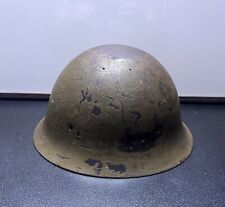
World War 2 Japanese Type 30 Helmet Shell *Thai Reissue* $85.00
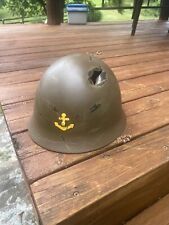
WWII Japanese Battle Damaged Type 99 Helmet (Repainted) $380.00
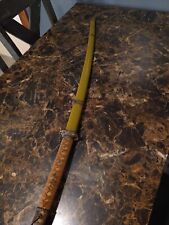
world war 2 officer katana $1500.00
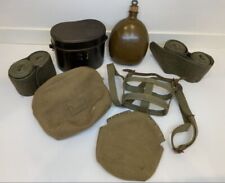
WW II Imperial Japanese Army Canteen, Mess Kit, Gaiters Set 1942 Military Gear $450.00

#27 WWII JAPANESE HAND HELD RABBIT EARS TRENCH BINOCULARS +CASE - ARSENAL MARKED $249.99

Original WWII Japanese "Betty" Bomber Fuel Line $60.00
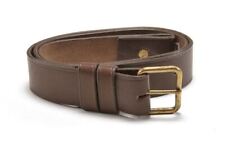
WW2 JAPANESE ARISAKA TYPE 99 LEATHER SLING with KANJI MARKINGS $28.99
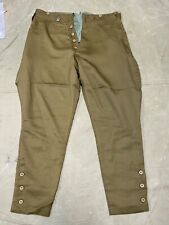
WWII IJA JAPAN JAPANESE ARMY INFANTRY OFFICER GABARDINE FIELD BREECHES-3 (34-36) $111.96
|